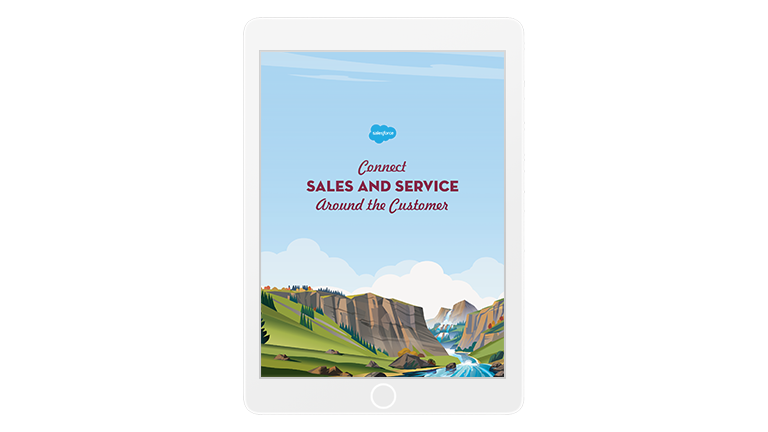Are silos stalling innovation at your company? Here’s how to solve the problem

Introduction
For the customers of fitness equipment maker Core Health and Fitness, interacting with both the sales department and customer service was an exercise in frustration.
When health club owners spoke with Core Health’s customer service representatives about the equipment they’d purchased, they wasted precious time providing background before explaining their service problem. Likewise, during interactions with salespeople, customers had to first enumerate the concerns they were having with the equipment before exploring different solutions.
“Their sales and service teams were having siloed interactions with customers, and neither team had access to the others’ customer data,” explains Bill Patterson, Salesforce’s executive vice president and general manager of Service Cloud.
Management at Core Health realized that there was a better way. By unifying Salesforce’s Sales Cloud and Service, the fitness equipment maker was able to have a single, comprehensive view of customer needs across sales and service.
“This gave the sales team access to the latest status of any support cases and gave the service team visibility into sales cycles so they could prioritize cases accordingly,” Patterson says.
It also highlighted several overarching business challenges that many organizations are confronting today: How does a company’s leadership make the difficult decision to adapt when core elements of the business need to change? And how does a company build a virtuous cycle in which sales and service work hand-in-hand for the greater, long-term success of the overall business?
Leading with needs
From next-day shipping to free in-home trials, consumers have come to expect extraordinary customer service. “We are in a transformational era driven by hyper-connectivity, artificial intelligence and an abundance of choice about where we spend our time, money and business relationships,” Patterson notes.
For startups, exceptional customer service is their business model and the key to disrupting entrenched industries. Legacy companies, though, sometimes struggle with how to break down the barriers between departmental silos and getting all the relevant players to take a multidisciplinary approach, which can become the stumbling block to customer service.
“Smaller companies are always thinking about growth, and they realize they have to bring down the walls between departments. But change takes a long time for bigger companies,” says Neil Patel, founder of Neil Patel Digital, a digital marketing firm.
Learning how to integrate customer service into the sales funnel can be the growth hack businesses of all sizes need.
“What companies are finding is that by increasing focus on customer service, it’s easier to upsell, retain customers longer, increase lifetime spending,” says Patel.
Information is everywhere
In the past, companies could rely on the merits of their products or services to drive sales. But in an increasingly competitive landscape that may not be enough.
Today’s customers have unprecedented access to information. They come to the sales relationship already knowing what they need and the pros and cons of one product solution over another.
“As the market becomes more commoditized and with so much information available, the customer is becoming educated before sales ever gets to their office,” notes Andrew Horvath, principal and lead of the distribution practice at the Alexander Group, a management consultancy. “There is no longer information asymmetry.”
Horvath adds: “The value of a salesperson is not to make me aware of options, but it’s to take what I think I need, figure it out on the back end and make it work for me.”
But it doesn’t end there, Horvath explains. The post-sale experience must be top-notch too. If it’s not, prospective customers are likely to hear about it, and that could have negative implications for future growth.
Breaking down the silos
Most organizations have clearly defined teams and roles. While that’s important internally—all organizations must know who does what to avoid duplicating their efforts—customers do not care about these distinctions. They simply want brands to meet their needs, and they pay little attention to whether that help is coming from a customer service rep or a salesperson. Most important, they want these interactions to be positive and seamless.
The more companies can create a value loop in which sales and customer service serve each other, they more they can project an image of a unified brand that solves problems for clients rather than a collection of departments that operate independently and are sometimes unaware of each other. Interactions that are informed by previous touchpoints allow the company to personalize the experience.
“Service agents should be able to identify upsell opportunities and have the right process to easily hand off the interaction to a salesperson at the right time,” Patterson says.
But that only works if customer information is shared across all business units. “If companies continue having sales and service work in silos, the customer experience will remain disjointed and your customers won’t be your customers for very long,” he adds.
Data drives a virtuous cycle
True innovation requires existential changes to a business and instigating a fundamental shift in how the company views itself. Leaders must reinforce the notion that managers should act beyond just their department’s best interests. They must place the customer experience first and foremost.
The smart use of technology makes this possible. First, there’s connectivity. Customers want to communicate with businesses through multiple channels. “There are so many ways to follow up with people, including text, chatbots, email, video, push notifications,” says Patel. “By communicating with customers how they want, you create a better experience.”
Further, as sales, service and operating technology mature, it can lead businesses to create new, previously unimaginable business models. Take, for example, jet engine makers that now lease technology by hours flown rather than by sales. Any downtime cuts into the bottom line. Reliable data—enabled by smart machines and the Internet of Things—allows them to spot potential service problems early, so those engines can be serviced quickly. The only way to make their business thrive is through exceptional customer service.
Technology also allows businesses to improve the customer experience by leveraging the synergy of consolidation. Answering customer service calls in “the order in which they are received” is outdated. Instead, a phone system should be able to determine which customers should receive prioritization based on their purchasing history and future purchasing behaviors. If the sales department is aware that a customer is having a large number of support calls on an old piece of out-of-warranty equipment, that can be the starting point for conversion to a replacement.
By combining sales and service, businesses can have a unified platform in order to deliver a seamless experience to their client base.
“Every interaction with a customer should be informed by previous interactions, but this only works if information is being shared back and forth across sales and service,” says Patterson. “Customer information absolutely cannot reside in silos.”
Questions? We’ll put you on the right path.



